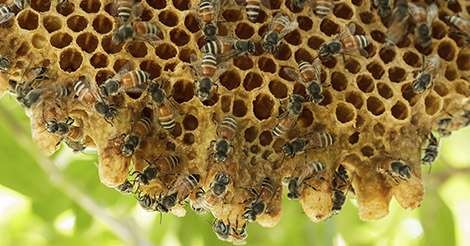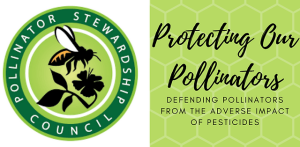By Tara Roberts
When agriculture helps pollinators, pollinators help agriculture, according to a research review published recently by an international group of experts, including a University of Idaho researcher.
Anahí Espíndola, a postdoctoral fellow in the UI College of Science Department of Biological Sciences, Anikó Kovács-Hostyánszki of the MTA Centre for Ecological Research in Vácrátót, Hungary, and their colleagues analyzed over 250 previous research studies and found that ecological intensification—a way of managing agricultural production by supporting processes already existing in the ecosystems—can help reduce pollinator decline while benefiting agricultural production. Their review paper was published in Ecology Letters.
These findings are important globally, but are particularly in the Pacific Northwest, Espíndola said. Many of the region’s key crops rely on pollinators, especially tree fruit production along the Columbia River in Washington.
Because the Pacific Northwest has a variety of ecosystems, it is home to many kinds of pollinators, including honey bees, wild bees and bumblebees; hummingbirds and other birds; butterflies and moths; beetles, and more. These pollinators contribute not only to crop pollination, but also to assuring the reproduction of plants that form ecosystems such as prairies or forests.
“Pollinators provide a service that has been valued to several billion dollars. It’s a lot of money that would be not earned if we didn’t have pollinators,” Espíndola said. “It’s not just about honeybees, it’s about this huge group of organisms that connect and help support plants and full biological communities.”
The team first reviewed research about how land use practices—such as plowing patterns, landscape transformation, planting large swaths of one crop, and herbicide or pesticide use—have led to declines in pollinator populations and species diversity.
The researchers then examined ways those practices could be implemented in agricultural production to help pollinators, especially by improving access to nesting and food resources. For example, planting strips of flowers by fields and allowing some weeds to remain would attract pollinators and thus affect their abundance. Herbicide practices also could be adjusted to avoid spraying at times when pollinators are active. Because pollinators can travel across distances, the simultaneous use of these practices across a region can increase their positive effects.
“Land-use change such as conversion of habitats to agriculture and conventional land-use intensification (i.e. monocultures managed by high chemical input) homogenizes landscape structure and quality and erodes floral and nesting resources, which undermines pollinator diversity and abundance, and also pollination services,” Kovács-Hostyánszki said. “Ecological intensification of agriculture is a strategic alternative to ameliorate these drivers.”
Supporting pollinators benefits the quality and quantity of crops, the researchers found: Pollination by multiple species can improve yield, and thoroughly pollinated flowers can produce better-quality fruit.
“Being able to maintain a certain diversity and a certain number of pollinators can directly define yield,” Espíndola said. “This means the smart use of the services that are in the ecosystem helps us, too.”
The studies the researchers analyzed showed that farmers who use ecological intensification actions may earn less in the first years, but would recover their investment back within a few years. One of the conditions for ecological intensification is that the agricultural system has to be sustainable and able to function with as little input as possible.
The paper also includes a section on how governments and communities can support ecological intensification. Support activities might include incentives that aid farmers as they adjust their practices, coordinating actions regionally to obtain more benefits, or tailoring approaches to local cultures and knowledge.
“You can use the knowledge that farmers have about the place they are to identify the actions that would be the most appropriate, and that would be the most easily applied in that region,” Espíndola said.
This review paper is the result of a larger project: a global assessment of pollination and pollinators written by the United Nations’ Intergovernmental Science Policy Platform on Biodiversity and Ecosystem Services (IPBES). Espíndola and her co-authors were part of an international group of 77 experts selected to create the report, which came out in 2016.









